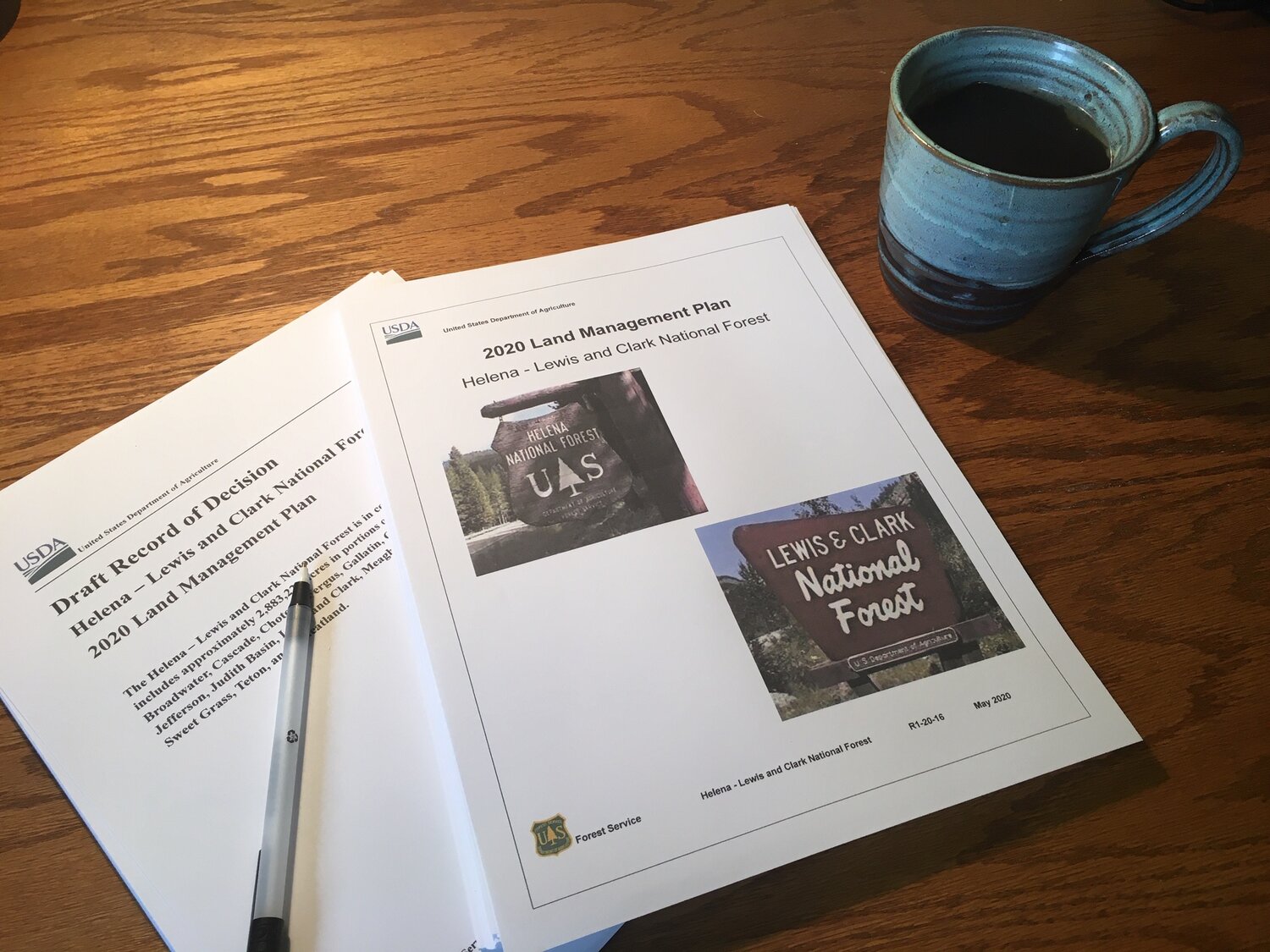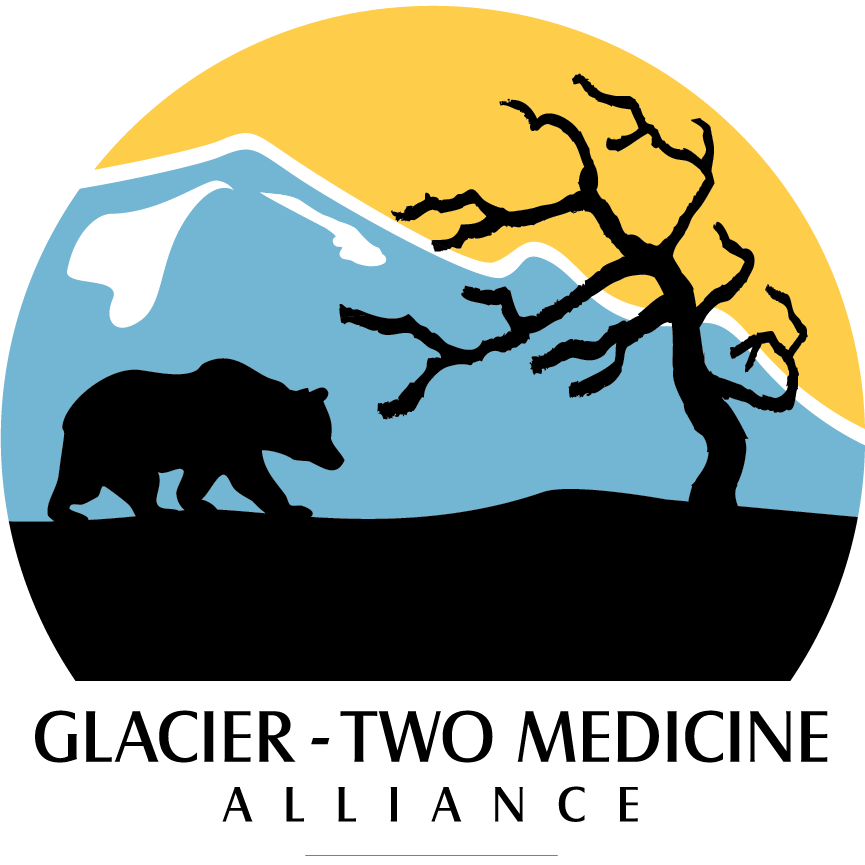
Late last month, the U.S. Forest Service released their long-awaited revision of the Helena-Lewis and Clark National Forest plan. This document is a big deal for the future of the Badger-Two Medicine, as well as the entire 3-million acres of the Helena-Lewis and Clark National Forest. It determines how our wildlands, clean water, and outdoor opportunities will be managed for the next 20-25 years.
Getting this one right is extremely important for everyone who cares about backcountry travel, our world-class wildlife habitat, and a wild Badger-Two Medicine.
So How Did They Do?
 We give the Forest Service a B- for their plan’s conservation impact on the Badger-Two Medicine region. While this may be a passing grade, there a few significant improvements the Forest Service needs to make before this plan is officially adopted.
We give the Forest Service a B- for their plan’s conservation impact on the Badger-Two Medicine region. While this may be a passing grade, there a few significant improvements the Forest Service needs to make before this plan is officially adopted.
Thankfully, the public still has one last chance to weigh in and help improve it. For more information about how you can help, just scroll to the bottom of this post. But for now, let’s pop the hood and analyze the good, the bad, and the ugly.
The Good
First and foremost we are pleased to see the Forest Service adopt stronger desired conditions for the Badger-Two Medicine than were in the original draft plan. Desired conditions are like vision statements. They describe the specific characteristics the Forest Service will work to maintain or achieve for a given area or resource. For Badger-Two Medicine, the desired conditions are for the area to continue to be “a sacred land, a cultural touchstone, a repository of heritage, a living cultural landscape”—and an undeveloped “refuge for wild nature” where “ecological processes like natural succession… function and exist.” Well done Forest Service.
A number of other strong components were also included that will help guide managers work to achieve these desired conditions. The most significant of these is Standard 01, which states in part that “uses of this area must be compatible with desired conditions and compatibility shall be determined through government-to-government consultation.” This standard is significant for two reasons:
-
First, standards are mandatory obligations on the Forest Service that can be enforced by citizens like us, not just statements of intent.
-
Second, the standard articulates a defined role for the Blackfeet in determining what uses are appropriate on Blackfeet sacred land. This standard thus dramatically increases the likelihood management activities and site-specific projects actually uphold or enhance the ecological and cultural integrity of the Badger-Two Medicine.
Several other positive aspects deserve mention. The preservation of free-flowing streams received a big lift, as over 60 miles of streams in the area were determined as eligible for listing under the Wild and Scenic Rivers Act. Backcountry recreationists can rejoice that the whole area was classified as “primitive” under the forest’s Recreation Opportunity Spectrum. This classification reaffirms the area is off-limits to motorized vehicles, limits potential development, and helps ensure backcountry users will continue to experience quiet and solitude when recreating in the Badger-Two Medicine.
Finally, when it comes to grizzly bears, we applaud the Forest Service’s decision to incorporate its recently adopted Habitat Management Direction into the plan. Grizzly bears and their habitat in the Badger-Two Medicine will be well protected under this directive even after the bear is eventually de-listed. That said, we are concerned about the lack of recommended wilderness in southern and eastern areas of the forest, which will limit the potential for grizzly bears from north-central Montana to connect with grizzlies in Yellowstone. This connectivity is essential to the long-term recovery and persistence of grizzly bears and without it, any effort to delist the species is biologically premature.
The Bad
Unfortunately for the Badger-Two Medicine, the forest removed a key standard that had been in the draft plan which would have substantially strengthened protections for the Blackfeet’s federally recognized Traditional Cultural District (TCD) in the Badger-Two Medicine. This standard would have ensured that management activities posed no “adverse effects” to Blackfeet cultural resources and traditional practices. From a conservation perspective, the integrity of the TCD is vital to our efforts to limit potential oil and gas or other resource development in the area.
Its removal is somewhat inexplicable given the emphasis the Forest Service itself acknowledges the Blackfeet placed on safeguarding the Traditional Cultural District throughout the forest plan revision process. Our frustration is compounded by the lack documented explanation for the change, which the Forest Service is required to do. To their credit, they recognize their error and have indicated the documentation will be forthcoming. We will continue to work with the agency to rectify this oversight as well as to try and bring back this important standard.
The Ugly
A major concern of ours is the Forest Service’s decision not to address the appropriateness of mountain bikes in the Badger-Two Medicine. In the draft Record of Decision for the plan, Forest Supervisor Bill Avey justified his decision, stating “the issue was already addressed in the travel plan decision for that area.” However, this is factually inaccurate. The 2009 travel management plan only addressed motorized use. The area remained open to mountain bikes by default, not because of any thorough analysis or public process as Mr. Avey suggests occurred.
Given the increase use of mountain bikes on national forest lands in Montana in recent years, a determination on their suitability in the Badger-Two Medicine is timely. Furthermore, the Blackfeet Nation has determined mountain bikes are incompatible with their traditional cultural values and practices in the area and have repeatedly requested the forest close the area to bikes and other forms of mechanized travel. Glacier-Two Medicine Alliance, and many of you, supported the Blackfeet request throughout the forest planning process. The Forest Service can and should address this issue before finalizing the plan rather than continuing to kick the can down the road.
One last chance to help improve the plan
The public has until July 20th to file a formal objection to any aspects of the plan. By Forest Service regulation, you must have submitted previous comments on the issue in order to participate. If you didn’t, you unfortunately can’t participate at this stage.
We encourage any of our members and supporters to consider objecting if the Forest did not adequately address your comments. The Forest Service will review the objections and then host a series of hearings to discuss people’s concerns and try to reach agreement on possible remedies that can be incorporated into the plan. The date, location, and format for the hearings is yet to be determined.
A few helpful resources
Glacier-Two Medicine Alliance is offering two resources to help you with this process. We will co-host a webinar with Montana Wilderness Association to review the plan in more detail and discuss participation in the objections process. The webinar will be held on Thursday, June 18 from 6-8 p.m. If you’d like to attend, please email info@glaciertwomedicine.org with the subject line: “Webinar” to receive registration information.
We are also actively creating a citizen tip-sheet to help you craft an objection. This tip-sheet will outline our recommended objections, highlight the policy basis for each, and provide additional tips on how to craft and submit. This should be ready to go by the end of the month. If you’d like to receive this, please email info@glaciertwomedicine.org with the subject line: “Tip-Sheet.”
A decent guide to the objection process is also available from the Forest Service.
If you have questions, or want to talk anything through, please do not hesitate to contact us. On behalf of everyone who loves and cherishes the wildlands of the Badger-Two Medicine, thank you for using your voice to help craft the best management plan possible.
